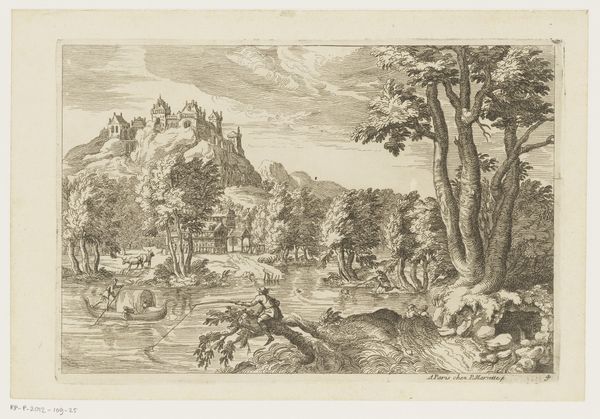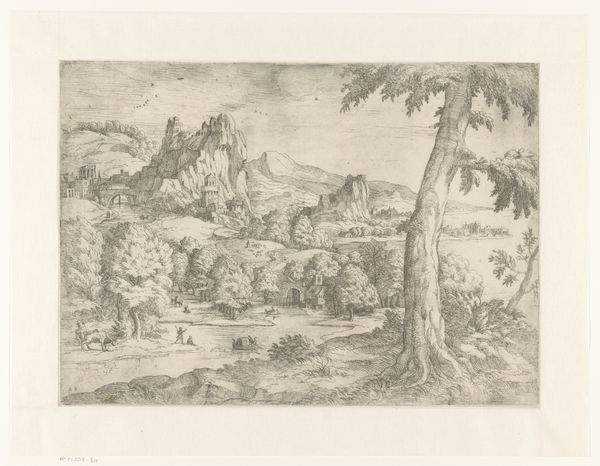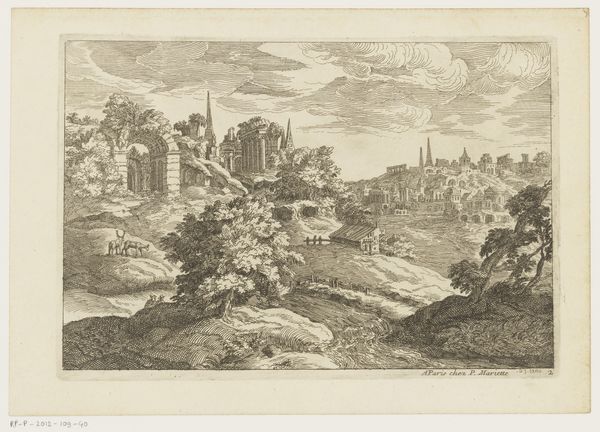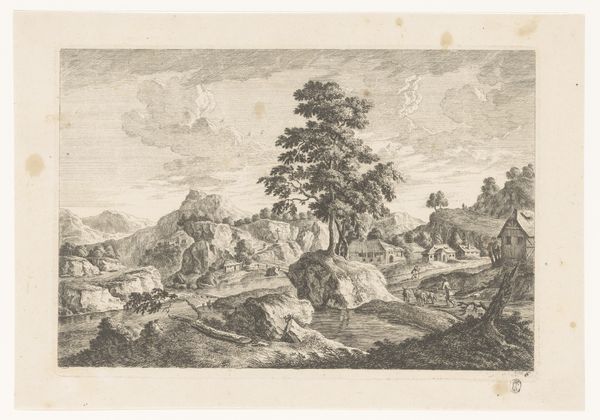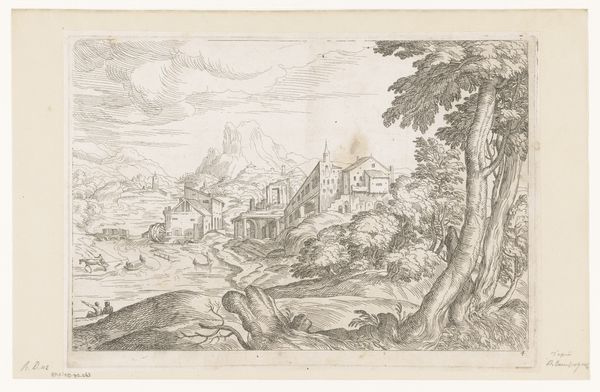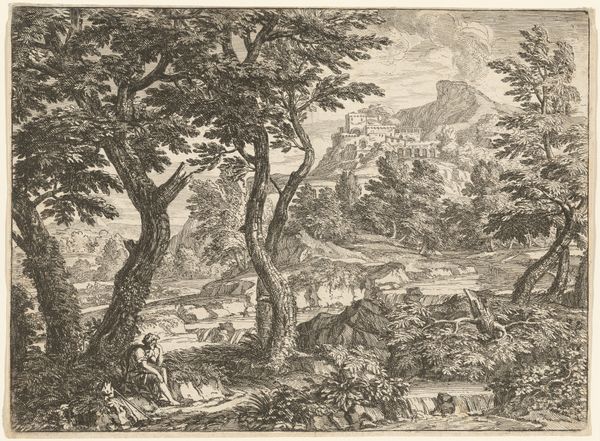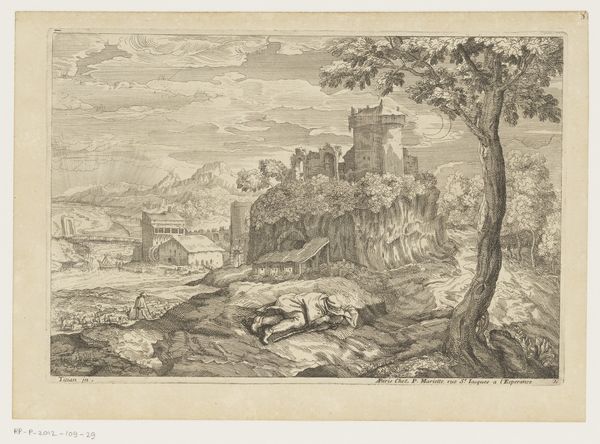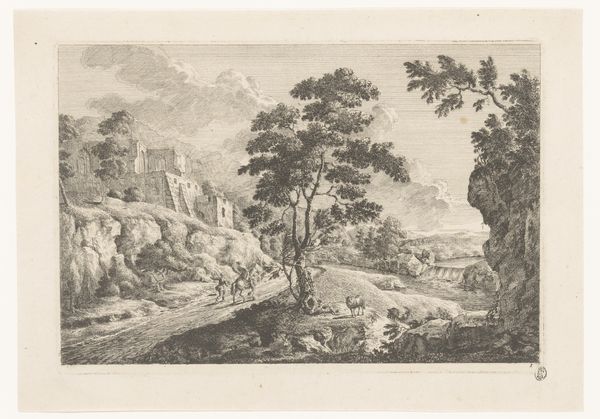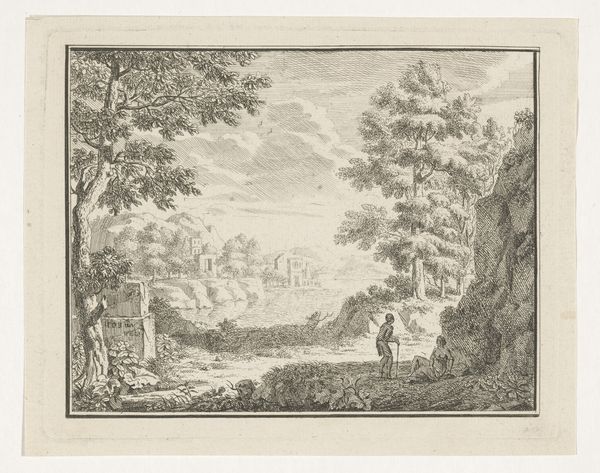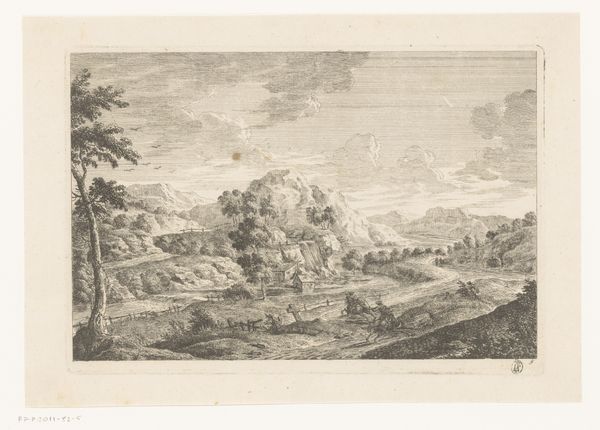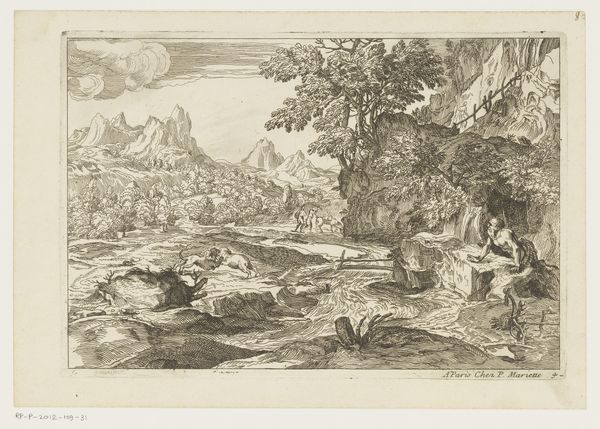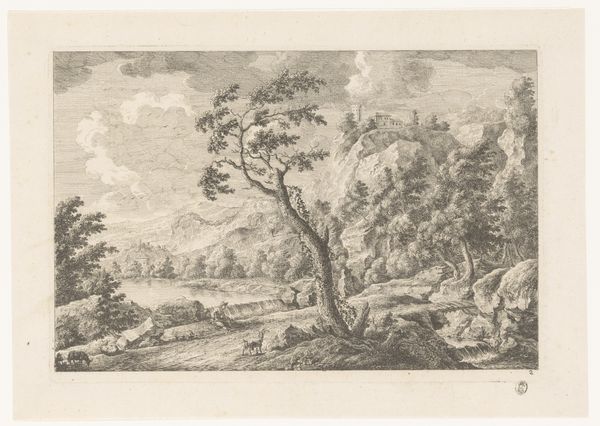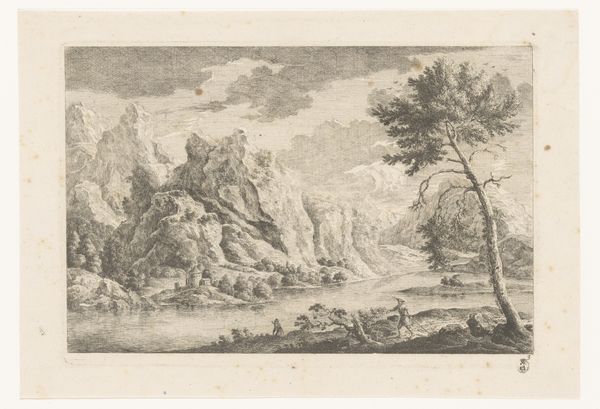
drawing, print, etching
#
drawing
#
baroque
# print
#
etching
#
landscape
#
etching
#
genre-painting
Dimensions: height 168 mm, width 244 mm
Copyright: Rijks Museum: Open Domain
Curator: The atmosphere in this 1679 etching, "Landscape with Figures Along a River," seems particularly evocative. The intricate network of lines gives the scene an almost dreamlike quality, don’t you think? Editor: I do. There’s a certain bucolic quality. The visible etching lines demonstrate the printmaking process itself. The materiality of ink on paper immediately shifts my reading of the landscape; I’m much more aware of the means of its production. Curator: Absolutely. Fouard presents this baroque-style landscape and directs our gaze through this idyllic setting that is both familiar and grand. Consider the context of such prints in the late 17th century, as they gained popularity with the burgeoning middle class. This sort of print was fairly affordable and provided an avenue for consuming and displaying landscape imagery. Editor: I'm especially drawn to the depiction of labor and leisure within the frame. You have a loaded cart drawn by oxen and two resting men while others nearby actively pull something from the water. Do you see any religious undercurrents or is this mostly for aesthetic interest? Curator: I would not characterize this as a straightforward, moralizing image, if that is what you’re suggesting. It seems primarily motivated by market interests and demonstrates mastery over form, which ultimately served Fouard's market interests. We have these figures inhabiting the landscape as though it is some theater production, existing mainly to support the staging of the landscape itself. The figures seem intentionally anonymous and generalized. The appeal probably came from reflecting a certain view of countryside living that was widely accessible to consumers in their own homes. Editor: It is so interesting how Fouard negotiates naturalism in an image intended for domestic consumption, a controlled engagement with landscape. It almost invites one to reflect on how artistic creation impacts ideas around land, labor, and nature itself. I imagine that these landscapes had a big effect in the cities and other communities far from this idyllic view. Curator: Indeed. As the social landscape continued to shift and change in early modern Europe, representations like these, so reliant on both nature and technique, provided powerful narratives that shaped social and cultural understandings of rural life. Editor: Examining art this way provides such insight; thank you for sharing. Curator: My pleasure; I’ve certainly learned a lot too!
Comments
No comments
Be the first to comment and join the conversation on the ultimate creative platform.
